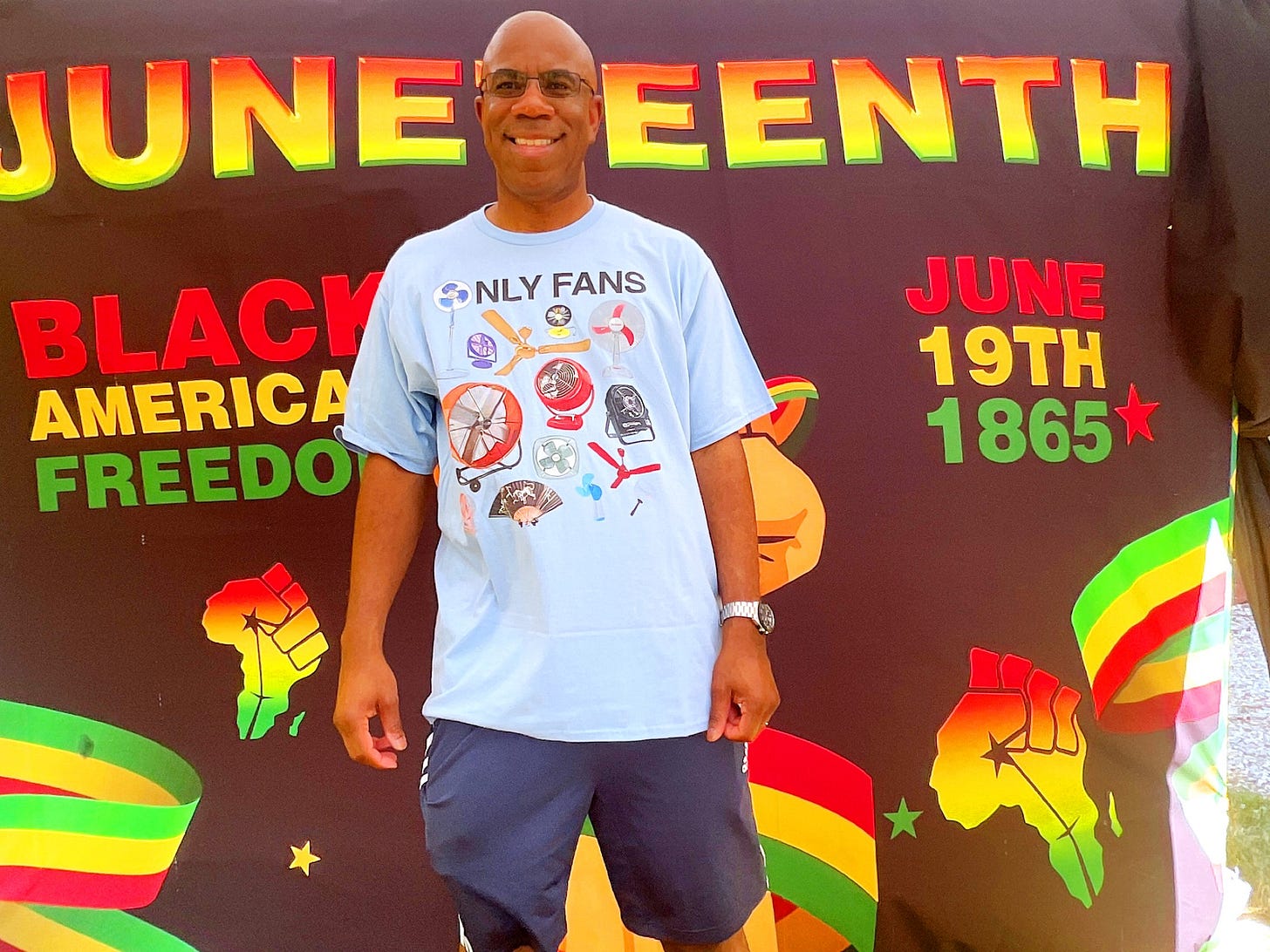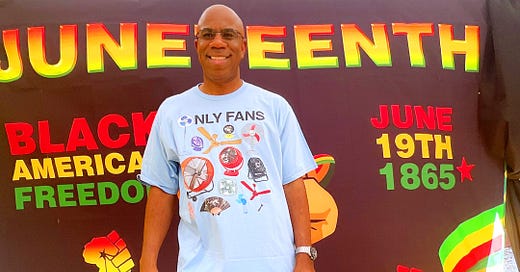The Nicholson Nugget: May-July 2024, issue 39

Meet Attorney Mark Nicholson! 👨💼 - Watch Video

The Nicholson Nugget May-July 2024, Issue 39
This is The Nicholson Nugget: the official newsletter of the Law Office of Mark Nicholson. You can subscribe by clicking here.
OFFICE NEWS:
Things have been busy around the office. In law school, I challenged myself to go to 52 different restaurants in 52 weeks. I did it, and it was a joy. Well, here it is, almost 20 years later, and I am doing it again. This time, I want to make a handbook of my experience.
We had our first office cookout at our new location! We celebrated our one year anniversary in our new office.
I was lucky enough to visit my sister-in-law for her birthday in Arizona AND attend the WNBA All-Star Game!
My summer internship ends this week. We will miss our interns, but we are incredibly grateful for their hard work and dedication. School will start soon for them, and we wish them all the best in their future endeavors!
Reading material: I wrote a book about Hemp last year. I included a link here, The Hemp Handbook. Also, I'm helping a friend finish a book that I'm proud to co-author! It should be available later this year on Amazon.
Special Days
May had my birthday, the Indy 500, Mother's Day, the Kentucky Derby, etc. Juneteenth and Father's Day were also celebrated in June. July had the 4th. There were a lot of special days in the last few months, and I hope you were able to enjoy them.
It was an honor for me to be invited as a guest speaker at the Juneteenth celebration in New Castle, Indiana.

In This Issue
Black Barbie! I watched it on Netflix and thought it was so good that I wanted to write a movie review. I included an excerpt. Also, the FBI sold fake phones to people.
The FBI's Fake Phones Actually Copied Your Messages
Introduction
In an unprecedented operation, the FBI successfully infiltrated the criminal underworld by selling fake encrypted phones to notorious criminals. Dubbed "Anom," this covert operation enabled international law enforcement agencies to monitor and arrest over 800 suspected criminals. This blog explores how the FBI executed this sting operation, its impact on criminal organizations, and what it means for the future of encrypted communications.
The Genesis of Anom
Phantom Secure Takedown
The roots of the Anom operation can be traced back to 2018 when the FBI dismantled Phantom Secure, an encrypted chat platform popular among criminals. According to FBI San Diego Assistant Special Agent in Charge Jamie Arnold, “When we took down Phantom Secure in 2018, we found the criminal organizations moved quickly to back-up options with other encrypted platforms.”
The demise of Phantom Secure left a void in the criminal communication network, which the FBI saw as an opportunity. While criminals scrambled for alternatives, the FBI, in collaboration with international law enforcement agencies, devised a plan to introduce their own encrypted messaging solution.
The Birth of Anom
A confidential source, previously involved with Phantom Secure, had been developing their own encrypted chat platform. This source offered the platform to the FBI, leading to the birth of Anom. The FBI then began working to circulate Anom within criminal underground circles, presenting it as a secure communication solution.
The Mechanics of Anom
Hardware and Software
Anom devices were special phones stripped of traditional capabilities like calling and emailing. According to the Australian Federal Police, “The mobile phones, which were bought on the black market, could not make calls or send emails. It could only send messages to another device that had the organized crime app.”
Marketing Strategy
To gain credibility and attract a criminal clientele, Anom had its own YouTube, Twitter, Facebook, and Reddit pages, advertising the app as a highly secure communications platform. Criminals could only acquire these devices through referrals, ensuring that users were part of the underground network.
Execution of the Operation
Message Monitoring
Unbeknownst to the users, every message sent via the Anom app was relayed to federal investigators. This allowed the FBI and its global partners to monitor real-time communications covering assassination plots, mass drug trafficking, and illegal gun distribution.
Global Arrests
The operation culminated in the arrest of over 800 suspected criminals across the globe. Europol reported that Anom served more than 12,000 devices belonging to over 300 criminal organizations, including the Italian mafia, outlaw motorcycle gangs, and crime syndicates based in Asia.
Implications and Reactions
Impact on Criminal Organizations
The Anom operation dealt a significant blow to various criminal organizations. By infiltrating their communication networks, law enforcement agencies were able to disrupt illegal activities and gather invaluable intelligence.
Law Enforcement’s New Strategy
The success of Anom marks a shift in law enforcement’s approach to tackling encryption. For years, the FBI has urged tech companies like Apple to create backdoors into their devices, citing the need to collect evidence against suspected criminals. With Anom, the FBI demonstrated an alternative strategy to circumvent encryption by creating a controlled communication environment.
Ethical Considerations
While the operation was a success from a law enforcement perspective, it raises ethical questions about surveillance and privacy. The Anom operation involved deceiving individuals into using a compromised platform, which some argue infringes on privacy rights.
Future of Encrypted Communications
Potential for Similar Operations
Given Anom's success, law enforcement agencies are likely to consider similar operations in the future. However, the widespread knowledge of Anom may also make criminals more cautious and push them to seek even more secure communication methods.
Conclusion
The FBI’s Anom operation is a landmark event in the realm of cybersecurity and law enforcement. By selling fake encrypted phones to criminals, the FBI managed to infiltrate and disrupt criminal networks on a global scale. As we move forward, the lessons learned from Anom will undoubtedly shape the future of encrypted communications and law enforcement strategies. For cybersecurity professionals, tech enthusiasts, and privacy advocates, and criminal defense attorneys, the Anom operation is a compelling case study in the complexities of digital privacy and security.
The Nicholson Nugget of the Month
"I have never been hurt by what I have not said."
By: Calvin Coolidge
Opening Statement
In a world where dolls are more than just playthings, Netflix's Black Barbie documentary stands out as a heartfelt exploration of representation, history, and the enduring legacy of one of the world's most iconic toys.
For Barbie fans, movie buffs, doll lovers, and toy enthusiasts, this film is a must-watch. Let's take a deep dive into why this documentary is worth every minute of your attention. Here is my movie review.
Discovering the Hidden Layers of Barbie
The documentary by writer and director Lagueria Davis, begins with an engaging opening statement that pulls viewers into the story of Barbie's evolution. It examines how the doll has mirrored societal changes and the pressing need for diversity in toys. From the moment the first Barbie was released in 1959, it was clear that she would be more than a mere doll—she would become a cultural icon.
A Glimpse into Barbie's History
One of the most fascinating aspects of Black Barbie is its detailed exploration of Barbie's history. Created by Ruth Handler, Barbie was initially introduced to fill a void in the toy market for an adult-looking doll that could inspire girls to dream big. Handler's vision was groundbreaking, and the documentary does an excellent job of showcasing her innovative spirit and the people she chose to surround herself with.
Ruth Handler's Visionary Leadership
Ruth Handler's role in Barbie's creation is central to the documentary. Handler listened to her workforce (especially Beula Mae Mitchell), welcoming ideas and feedback that would shape Barbie's future. This open-minded approach allowed the brand to evolve and address changing societal norms and expectations, including the need for more diverse and representative dolls.
The Birth of Black Barbie by Kitty Black Perkins
The introduction of Black Barbie was a significant milestone. Mattel hired Kitty Black Perkins to create the first Black Barbie. This documentary reveals the behind-the-scenes challenges and triumphs involved in making Barbie more inclusive. The film highlights the importance of representation and how a single doll can make a huge impact on young minds. The documentary included an insightful look at the work of Doctors Kenneth and Mamie Clark and "The Doll Test." This test essentially proved the psychological effects of segregation on African-American children. Black children preferred white dolls over Black dolls, even though they looked the same except for skin color.
Here is the link to the full movie review: Black Barbie Movie Review



